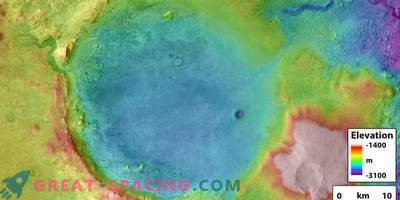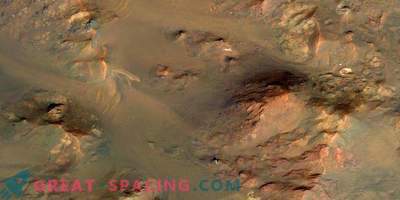
Color image of the plain of Hellas on Mars
The northeastern territory of the Hellas Plain, located in the southern hemisphere of Mars, contains many ephemeral lakes, demonstrating Martian history. The new study explores the area where the basin could shelter water from various sources, including rainfall, river flows and groundwater.
The sediments partially filled the depressions or formed fan-shaped deposits in paleo-lakes. Some of them appeared in fresh degraded impact craters, while others are located in paleo-lakes - lakes that existed during a period when the climate was different from today.
Candidates for paleo-lakes are identified along drainage systems that empty into smaller depressions on the edge of the Hellas Plain - the largest and most ancient impact pool on the surface of Mars with a length of 250 km. Scientists managed to find several groups of ancient lakes, some of which served as a source of channel systems hundreds of kilometers wide while others formed flowing lakes. Some of the entrance channels appeared due to flash floods. There are those that were disastrous in magnitude.

Map of the study area of Mars. The light blue areas are candidates for paleo-lakes, the blue lines represent channels and valleys. Asterisks indicate volcanic centers that were active at the time when canals and lakes appeared.
Walk-through lakes are identified from two connected channels (entrance and exit). Small inlet channels in these areas indicate that the lakes were filled with groundwater and provided only a slight discharge of water to the surface. Other lakes could fill up during the period of accidental flooding. There are even options with precipitation in the form of snow.
One paleo-lake is almost filled with smooth sediments similar to that observed in salt lakes in the Andes mountain region (Patagonia). This means that the Martian conditions during the formation of the lakes were comparable to those in the highland, cold and arid region of the Andes.
The list includes 34 candidates for paleo-lakes with a detailed geographical analysis of the region of northeastern Hellas. It turns out that Mars was hydrologically more active and lakes appeared throughout history.










































